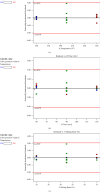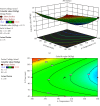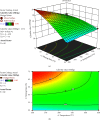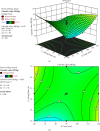Production of Composite Briquette Fuel from Brewery Wastewater Sludge and Spent Grains
- PMID: 39410933
- PMCID: PMC11479789
- DOI: 10.1155/2024/1710628
Production of Composite Briquette Fuel from Brewery Wastewater Sludge and Spent Grains
Abstract
Biomass waste energy recovery is a significant method for recycling energy from waste and capturing it for use in renewable energy sources. The abundance of brewing byproducts, such as brewery spent grain (BSG) and brewery wastewater sludge (BWWS), as well as their high carbon concentrations gives these wastes energy potential. With 20% molasses utilized as a binding agent to maximize the high caloric value of the briquette, this study sought to examine the quality of mixed briquettes made from BSG and BWWS. In order to make composite briquettes with a maximum caloric content of 19.94 MJ/kg, the ideal conditions were chosen, which included a temperature of 350°C, a production period of 60 min, and a 75% BSG mixing ratio. It can be compared to sawdust briquettes, which have a calorific value of 22.88 MJ/kg, by looking at the calorific value of densified with pressure 100 bar for mixed carbonized briquettes vs mixed noncarbonized briquettes (21.13 MJ/kg). The value of R 2 was 0.9607 and indicated that 96.07% of the total validation in the calorific value correlation between experimental and predicted values. The finding of the study showed that the efficiency of the quadratic model in fitting the data would be higher under the conditions of the experiment. Based on ISO 17225-6 fuel quality classes and specifications for graded nonwoody pellets, the study concluded that using BSG and BWWS as alternative energy sources meets those requirements.
Copyright © 2024 Bontu Teshome et al.
Conflict of interest statement
The authors declare that they have no conflicts of interest.
Figures












References
-
- Engida T. M., Mekonnen A., Wu J., Xu D., Wu Z. Review paper on beverage agro-industrial wastewater treatment plant bio-sludge for fertilizer potential in Ethiopa. Applied Ecology and Environmental Research . 2020;18(1):33–57. doi: 10.15666/aeer/1801_033057. - DOI
-
- Kpalo S. Y., Zainuddin M. F., Manaf L. A., Roslan A. M. Production and characterization of hybrid briquettes from corncobs and oil palm trunk bark under a low pressure densification technique. Sustainability . 2020;12(6):p. 2468. doi: 10.3390/su12062468. - DOI
-
- Jinhui L. Types, amounts and effects of industrial solid wastes. Point Sources of Pollution: Local Effects and their Control . 2009;1:p. 204.
-
- Thiago R. d S. M., Pedro P. M., Eliana F. C. S., Eliana F. C. S. Solid wastes in brewing process: a review. Journal of Brewing and Distilling . 2014;5:1–9. doi: 10.5897/jbd2014.0043. - DOI
-
- Nusong P., Puajindanetr S. Briquette fuel production from wastewater sludge of beer industry and biodiesel production wastes. IOP Conference Series: Earth and Environmental Science . 2018;133 doi: 10.1088/1755-1315/133/1/012022.012022 - DOI
LinkOut - more resources
Full Text Sources
Miscellaneous

